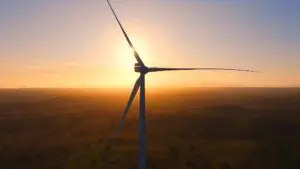The new direction of a rejuvenated Australian Energy Market Operator is starting to take shape, with the organisation announcing plans to have 100MW of demand response capacity in the Victorian and South Australian markets in time for the summer peaks and heatwaves.
The program, being run jointly with the Australian Renewable Energy Agency, signals a tangible change in focus for AEMO, and the market in general, in finding smarter ways to manage supply and demand rather than simply building more fossil fuel plants and poles and wires.
AEMO’s new CEO Audrey Zibelman is already a champion of demand response and it was one of the major levers that she pulled when running New York’s Reforming the Energy Vision program that aims for more decentralised power, and 50 per cent renewable energy by 2030.
In the PJM market, one of the biggest in the US, demand response accounts for 10 per cent of total capacity, and Zibelman sees no reason why it cannot grow to be at least 30 per cent of the Australian market.
That’s because Australia has a ready-made investment in the technologies that are needed. More than 1.6 million homes and businesses have installed rooftop solar, and many of these will install battery storage as well.
“If you have solar on your roof and you are putting in storage, it is saying that during certain hours of the day you use solar to charge up the battery, and then, rather than relying on grid, you reduce demand on the grid. For us (the grid operator) that’s the same as increasing generation.”
Zibelman says it is an obvious solution to provide a price signal to use these resources, as well as rewarding others – such as manufacturers and large businesses – for cutting back on their power usage at critical moments, rather than spending more money on new plant.
“If we can reduce the amount of demand, that has the same benefit as the grid, and is a lot less expensive than building a new power plant that is only used for a few hours a year,” she says.
ARENA will inject $22.5 million to fund the pilot program, and the two organisations were running an all-day workshop with industry stakeholders in Melbourne on Friday to consult on the program.
The money provided by ARENA will be used to actually make the “reward payments” to consumers who deliver the smart response. It is needed because, unlike other countries, Australia’s main energy market does not have a broad-based mechanism to encourage the service.
The main rule maker, the Australian Energy Market Commission, has been resisting such changes – as it has many other initiatives – under pressure from the fossil fuel industry.
“This is a breakthrough moment,” said Luke Menzel, CEO of the Energy Efficiency Council, the peak body for energy efficiency and demand response experts, many of whom were at the AEMO/ARENA workshop.
“The technology now exists for sophisticated and substantial demand response, enabled by aggregators that combine many different sites together into ‘portfolios’ that provide flexible, secure and stable demand response.”
“This approach is common in energy markets around the world, but has long been underutilised in Australia’s National Energy Market (NEM), because the right structures and incentives for aggregators to do this work haven’t been put in place.”
The timing of the initiative is telling, given the issues about blackouts and load-shedding, and several near misses that occurred last year across the eastern states, but particularly in South Australia and NSW.
The retirement of Hazelwood has raised fears of shortfalls in energy, but a major concern for AEMO is the performance of the plant that are still in operation, given the failure of key coal and gas generators at critical times during the heatwaves earlier this year in South Australia, NSW and Queensland.
AEMO is also under scrutiny over its handling of some of those events. But since Zibelman’s arrival in late March, the focus has very much switched to smarter solutions rather than traditional technologies.
“This is about the future of the grid,” Zibelman says, noting the new technologies such as software, smart thermostats, smart appliances, as well as solar and storage beyond the meter and on the grid. She said this technology can be used to avoid outages.
“If we can reduce the amount of demand, that has the same benefit as the grid, and is a lot less expensive than building a new power plant that is only used for a few hours a year. Some call this the democratisation of energy …. but it is essentially about the ability for people to use their own resources, and to get reward for it.”
A trial run by United Energy revealed that peak demand could be reduced by up to 30 per cent, and in its Future Grid report, the CSIRO and Energy Networks Australia openly canvassed the option of paying households with solar and storage to effectively “leave the grid” during periods of peak demand when supply was struggling to provide enough power.
EnerNoc, the largest demand-response aggregator in the world, said in March that it could source a 100MW “virtual power plant” in South Australia by December, by signing up commercial and industrial users to agree to reduce non-essential load when dispatched by AEMO or the SA government.
It said this would be far cheaper than installing an equivalent amount of polluting and expensive diesel generators that the South Australia government is considering under its Energy Security Plan.
“Demand response is an elegant solution. By creating voluntary measures, and a virtual power plant, we can protect those customers who don’t want to be cut off. It turns the load shedding paradigm on its head,” Asia-Pacific director Jeff Renaud told RenewEconomy last month. This could be achieved with relatively simple improvements to the NEM’s market design.
Zibelman favours the use of demand response, but such suggestions have been hitherto rejected by the Australian Energy Market Commission, which sets the rules, after the usual fierce lobbying from the fossil fuel industry.
Australia, despite being ahead in the deployment of renewables, is trailing most markets in the use of mechanisms to manage the variability of supply, and in the use of energy efficiency and demand response to manage peaks.
Zibelman says trials are a good means of showing a “proof of concept” that can then be used to bring in new market mechanisms and rules.
“I know it will work,” she told RenewEconomy. “This is a good way to go forward to provide the proof of concept. We often see skepticism about change. This is a good way to show that this can work.”
She was also enthusiastic about the A-LAB program, which is designed to encourage dialogue on new market mechanisms and challenges. “The role that AEMO should play is taking on the more complex issue and helping solve them.”
Zibelman said the advantage of demand response was that it was fast acting, and could provide services over short and long periods, essential in a renewables-based grid that needs more flexibility. Behind the meter storage, and even electric vehicles, would also play a critical role.
“We know the wind blows better at night … and we know that solar delivers during the day. If we can use storage to charge batteries and shift that capacity, and shift some of the demand … that’s the kind of thing we want for grid of the future.
ARENA CEO Ivor Frischknecht also said demand response would help to facilitate Australia’s transition to renewable energy.
“We need to find new, smarter ways of coping with spikes in demand and volatility as we move towards an electricity system with more variable renewable energy supply.
“Initially, we are seeking to fund demand response to make available temporary supply during system-wide emergencies. In the future, demand response could also be used to smooth out frequency disturbances, network disruptions or price peaks,” Frischknecht said.
Zibelman said that while she expected 100MW of demand response to be in place by summer, she was not advising plans by the SA government to install diesel generators to be abandoned. “I think that this summer we going to want all the resources we have available. This is, to me, a supplement.”









